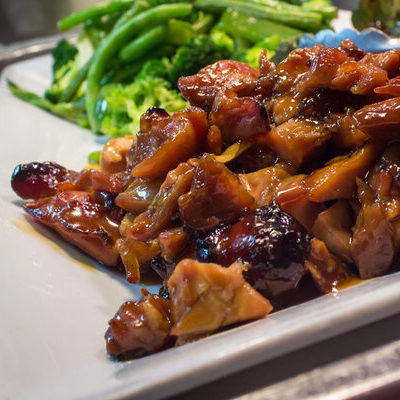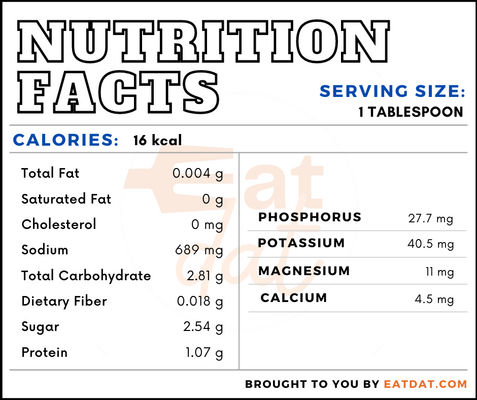
Teriyaki
What is Teriyaki?
Teriyaki is a Japanese cooking technique in which broiled or grilled food is glazed with a sauce made of soy sauce, mirin, and sugar. This specific glazing sauce is known as teriyaki sauce. Its name comes from the Japanese word ‘tare’, referring to the shine given to the food and ‘yaki’, referring to cooking by grilling or broiling. Teriyaki sauce is brown in color, has a sticky texture, as well as a mixture of sweet, tangy, and salty flavors.
- This sauce is traditionally used with different types of fish and meats.
- Also, it may be used with other seafood such as squid.
The top 9 most popular teriyaki sauce brands are:
- Kikkoman
- Soy Vay
- Primal Kitchen
- G Hughes
- Lee Kum Kee
- Tastefully Simple
- Hungry Squirrel
- Sweet Baby Ray’s
- Coconut Secret
Origin of teriyaki
The teriyaki method of cooking originated in 17th century Japan. It made use of a mixture of soy sauce, sugar, and mirin to glaze the grilled meat and fish. During World War II, Japanese immigrants to Hawaii can be credited with the making of the distinctive sauce used in this style of cooking, which we know today as teriyaki sauce. These days, this sauce can be enjoyed the world over.
Nutrition
Nutritional profile for teriyaki sauce (1 tbsp):

This sauce has the capacity to reduce microbiological risks of consuming meat or fish. The soy sauce ingredient contains all essential amino acids. Additionally, it contains isoflavones, which may help in reducing the risk of cardiovascular disease, cancer, and osteoporosis, as well as treatment of menopausal symptoms.
Soy sauce contains phytoestrogens, which may lead to cancer in certain people. Also, it may increase the risk of hypothyroidism. In addition, soy sauce contains high levels of sodium, which may increase the risk of diseases such as chronic blood pressure, stroke, heart diseases, and kidney diseases.
Commercial production
Commercially produced teriyaki sauce requires soy sauce, mirin, sake, dashi, and sugar. The ingredients are mixed well and heated until they become sticky and thick. Additional seasonings may be added. This sauce must be stored in the refrigerator after opening. An opened bottle can last for up to three months.
Teriyaki tecipes
This sauce is traditionally used for glazing fish and meat. However, it may be used as a marinade, in barbecues, as salad dressings, and simply as a sauce. Here are some recipes:
- Stir-Fry
- Chicken
- Sticky Tofu
- Mushrooms
- Noodles
- Sizzling Squid
- Grilled Octopus
- Calamari Stir Fry
- Salmon
- Steak Roll Ups
- Trout
FDA regulations
The FDA classifies teriyaki sauce as a condiment. It is defined by the USDA as a product produced from a combination of soy sauce, wine, vinegar, salt, spices, sugar, other ingredients, and preservatives. It must have a dark, reddish-brown color and sweet and spicy flavor.
References
Production, Kikkoman, https://www.kikkoman.eu/industrial/production/
Bree Recker, Teriyaki Sauce: Origins and Ingredients, The Gourmet Journal, https://www.thegourmetjournal.com/english-version/teriyaki-sauce-origins-and-ingredients/
Moon, Hyeree et al. “Teriyaki sauce with carvacrol or thymol effectively controls Escherichia coli O157:H7, Listeria monocytogenes, Salmonella Typhimurium, and indigenous flora in marinated beef and marinade.” Meat science vol. 129 (2017): 147-152. doi:10.1016/j.meatsci.2017.03.001, https://pubmed.ncbi.nlm.nih.gov/28285115/
Barrett, Julia R. “The science of soy: what do we really know?.” Environmental health perspectives vol. 114,6 (2006): A352-8. doi:10.1289/ehp.114-a352, https://www.ncbi.nlm.nih.gov/pmc/articles/PMC1480510/
